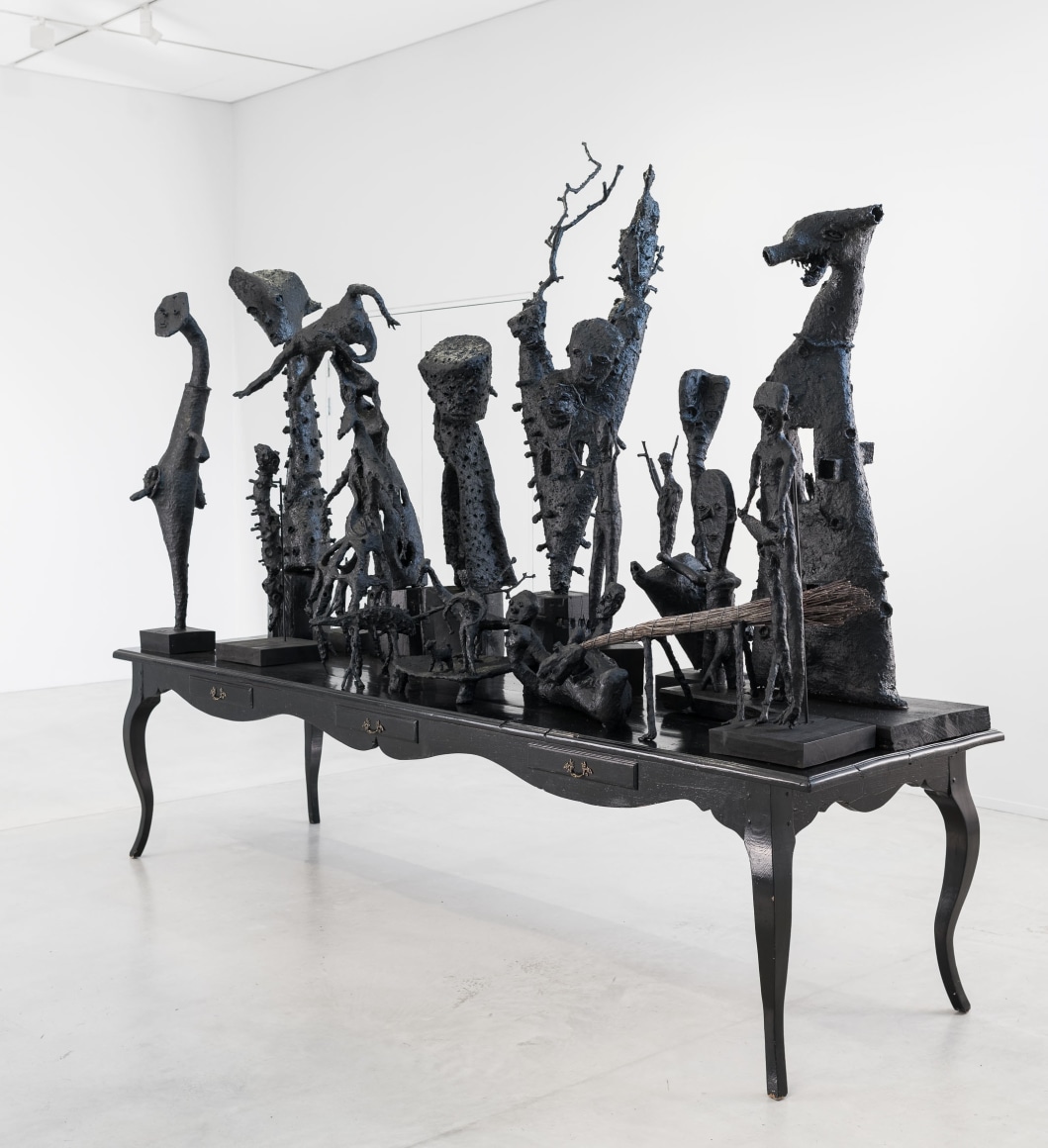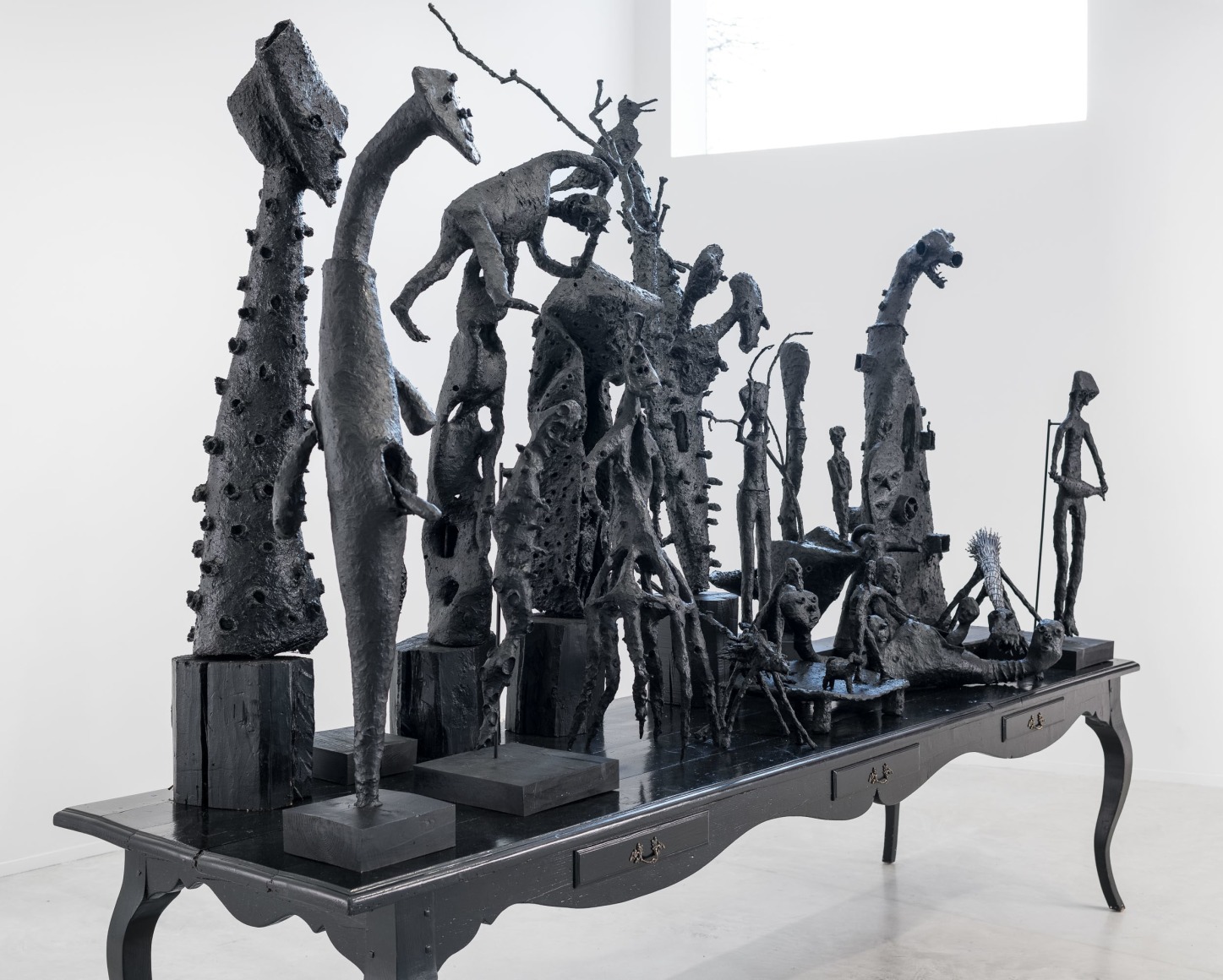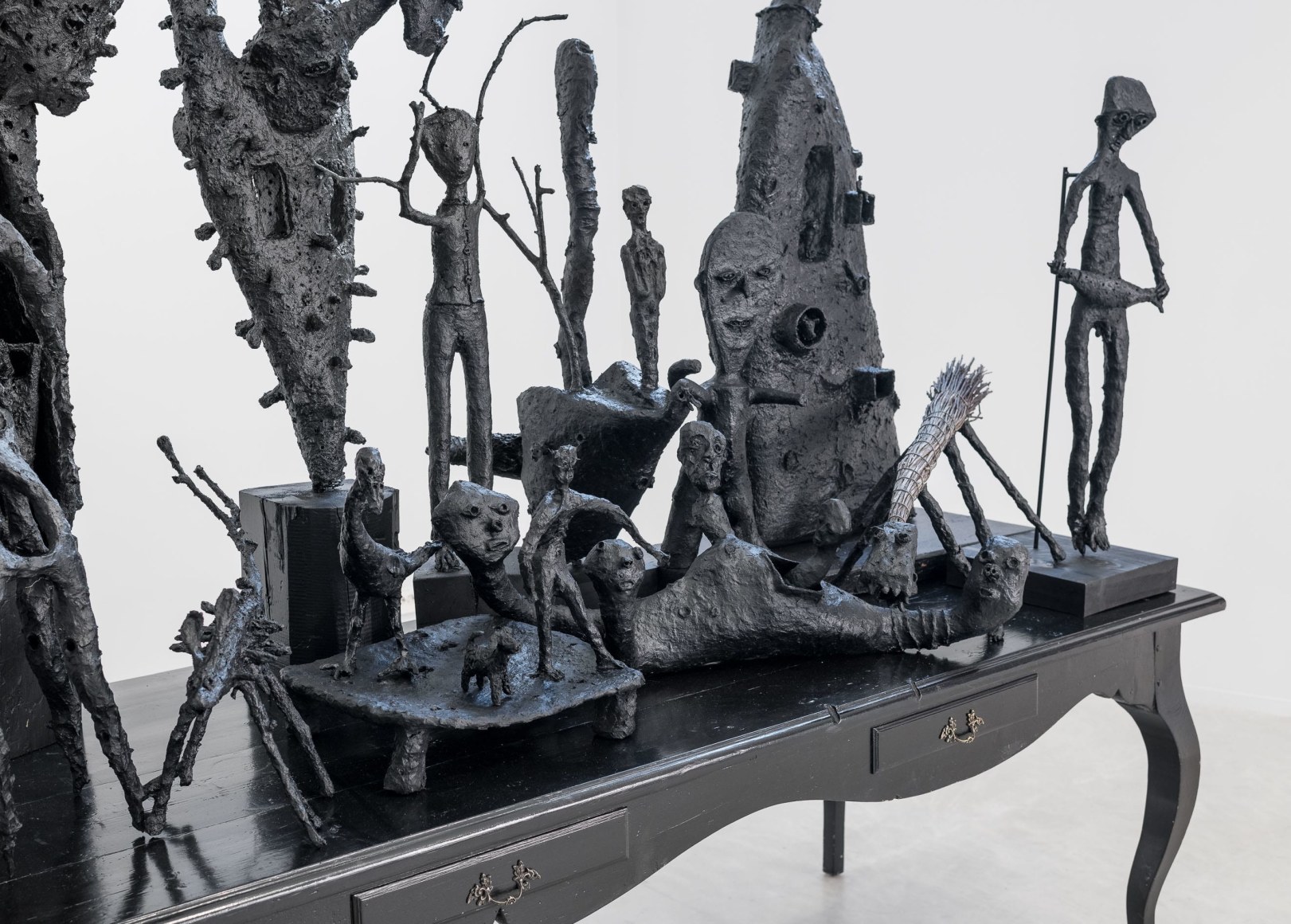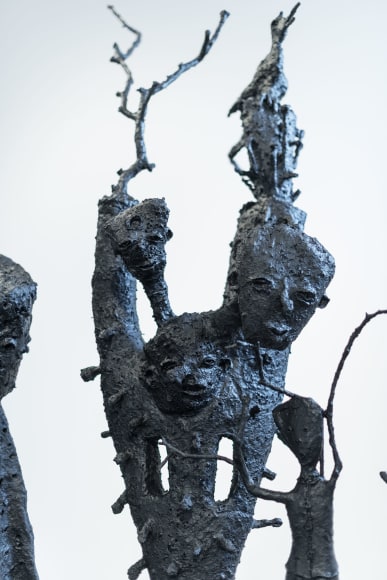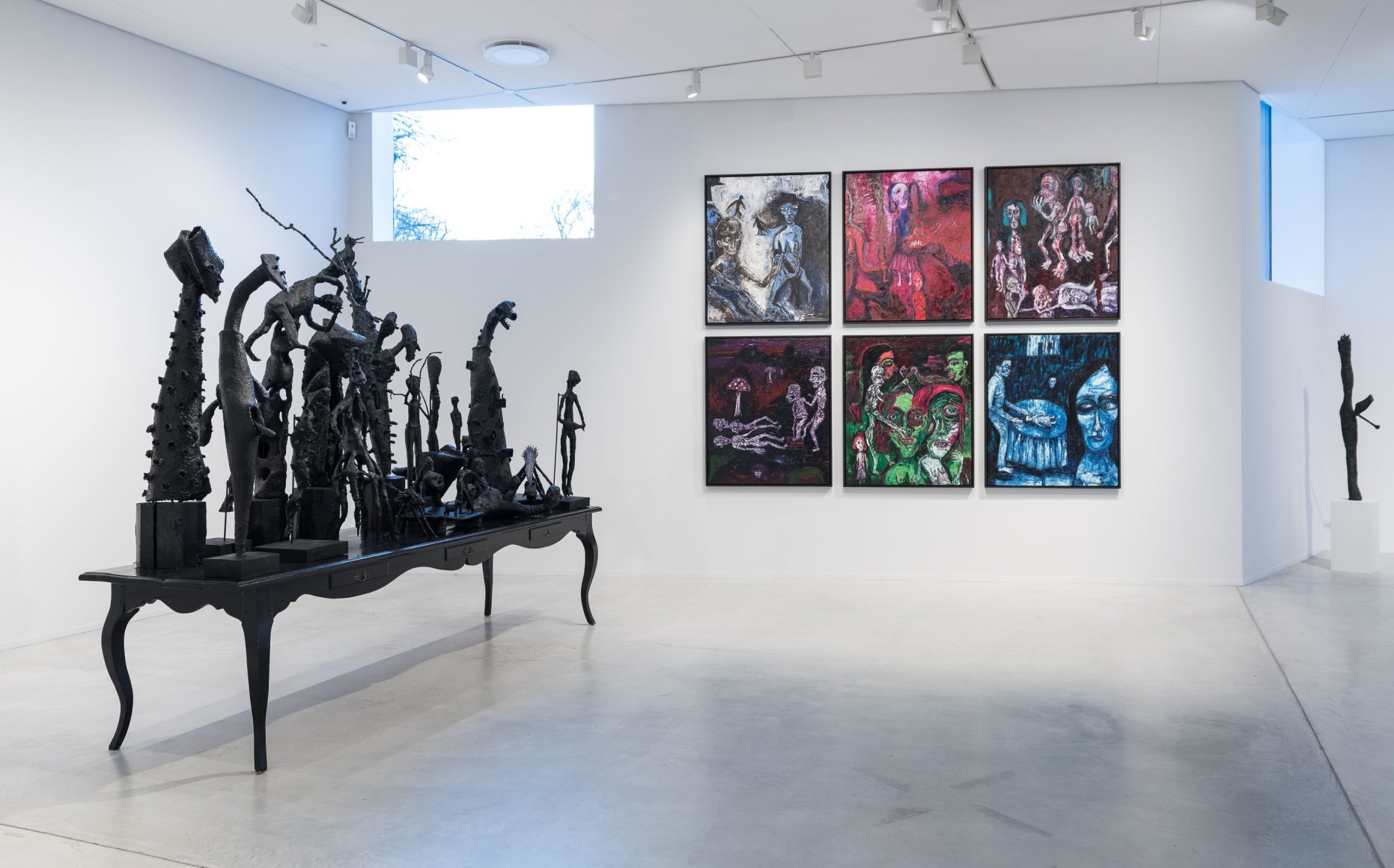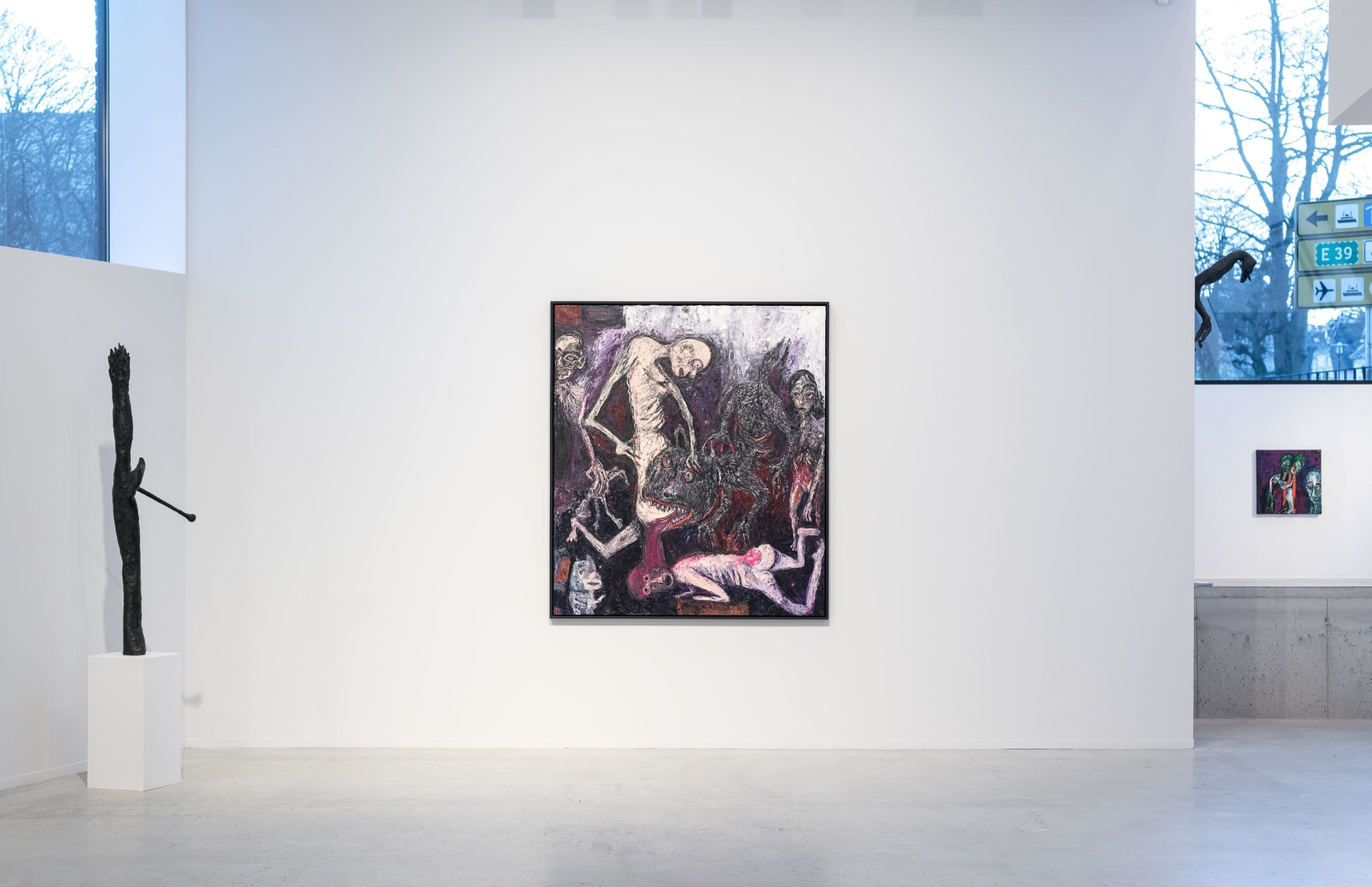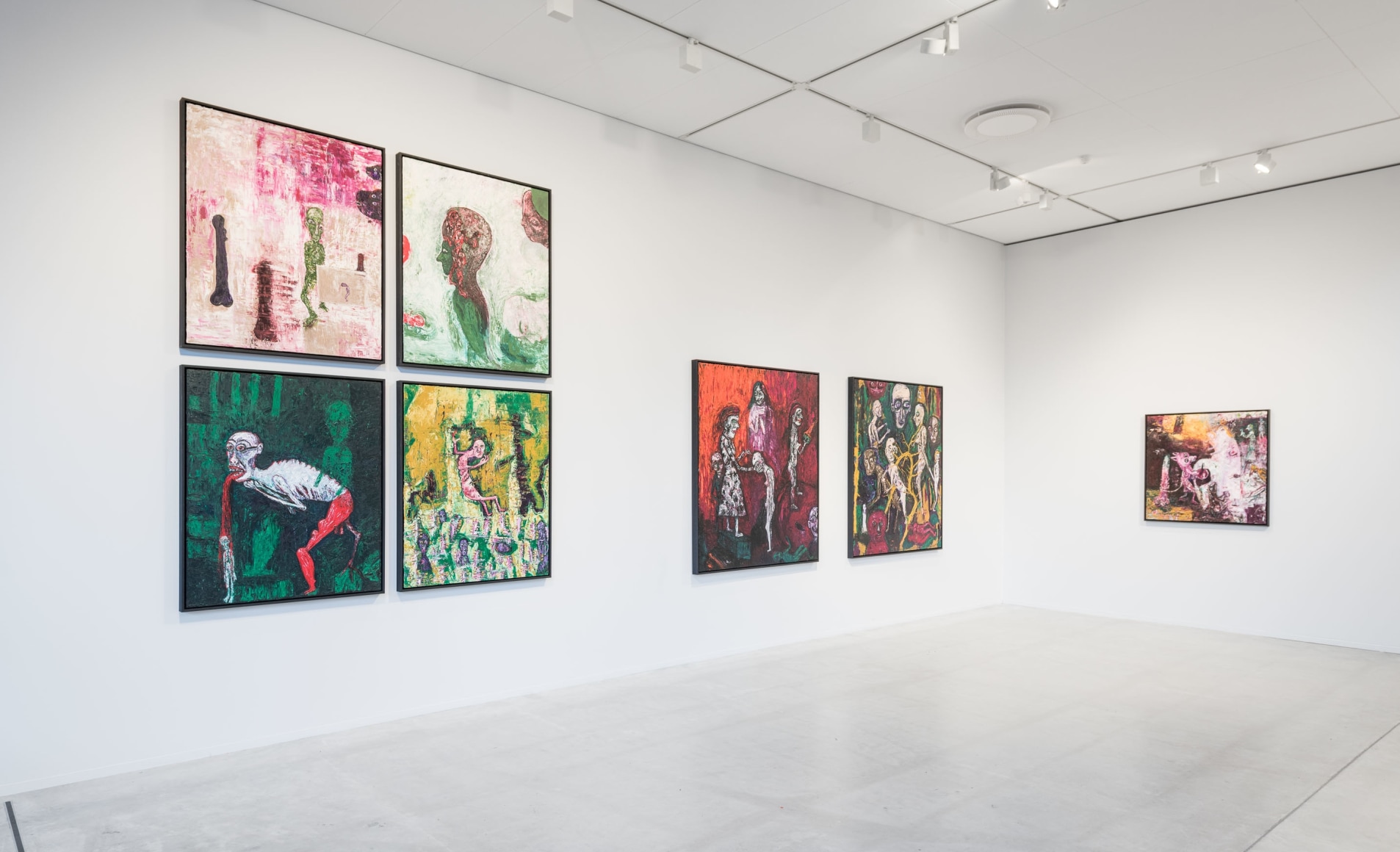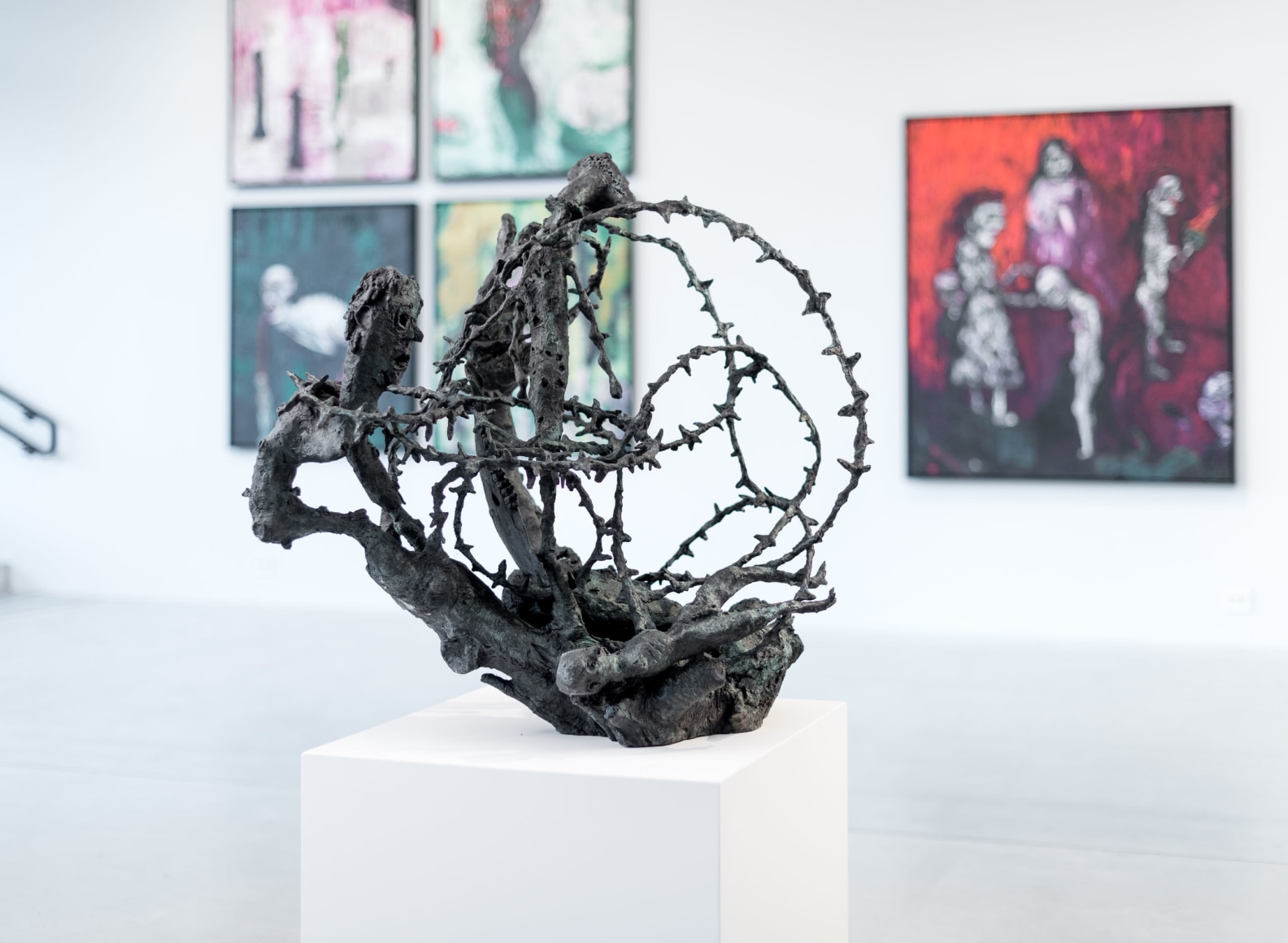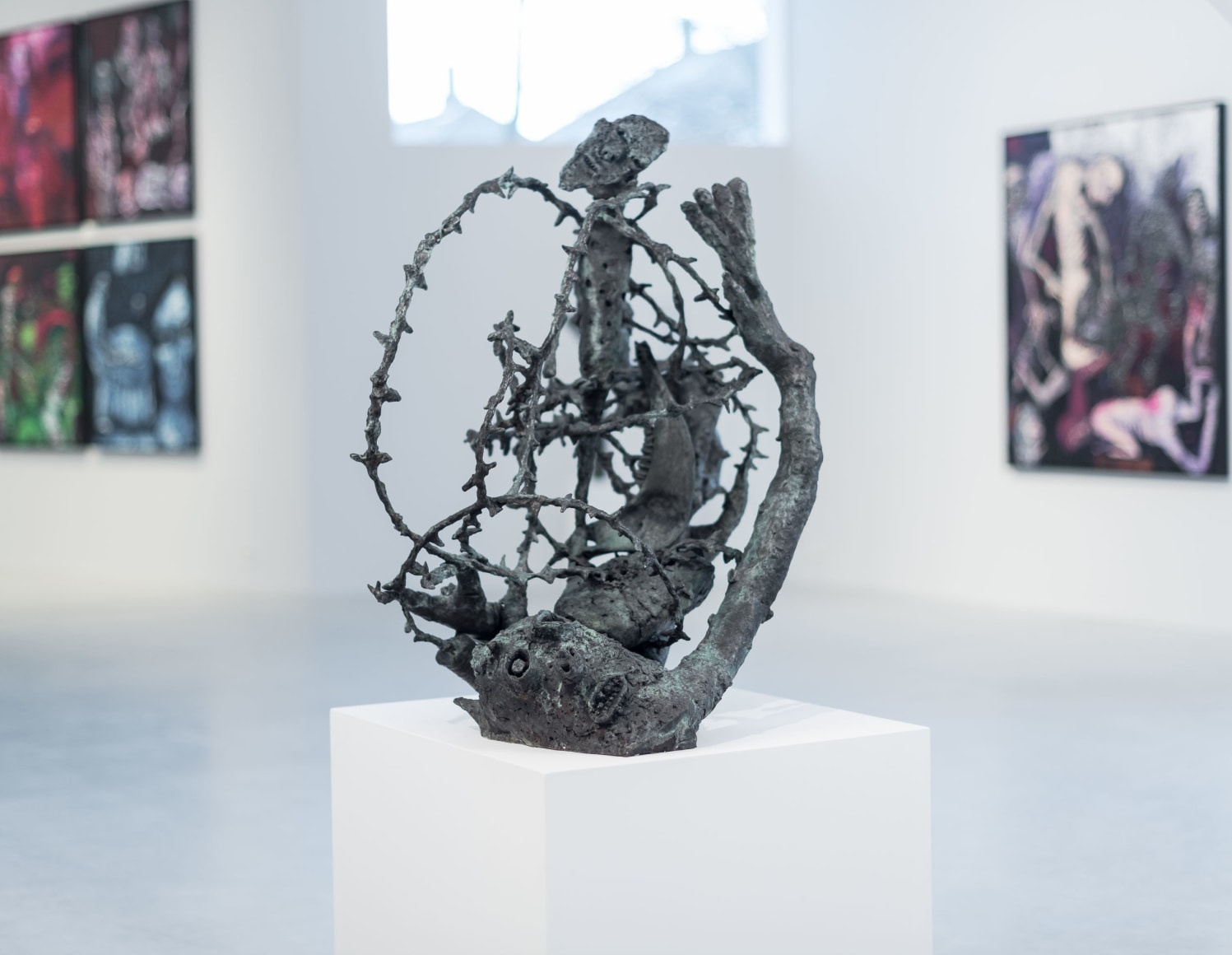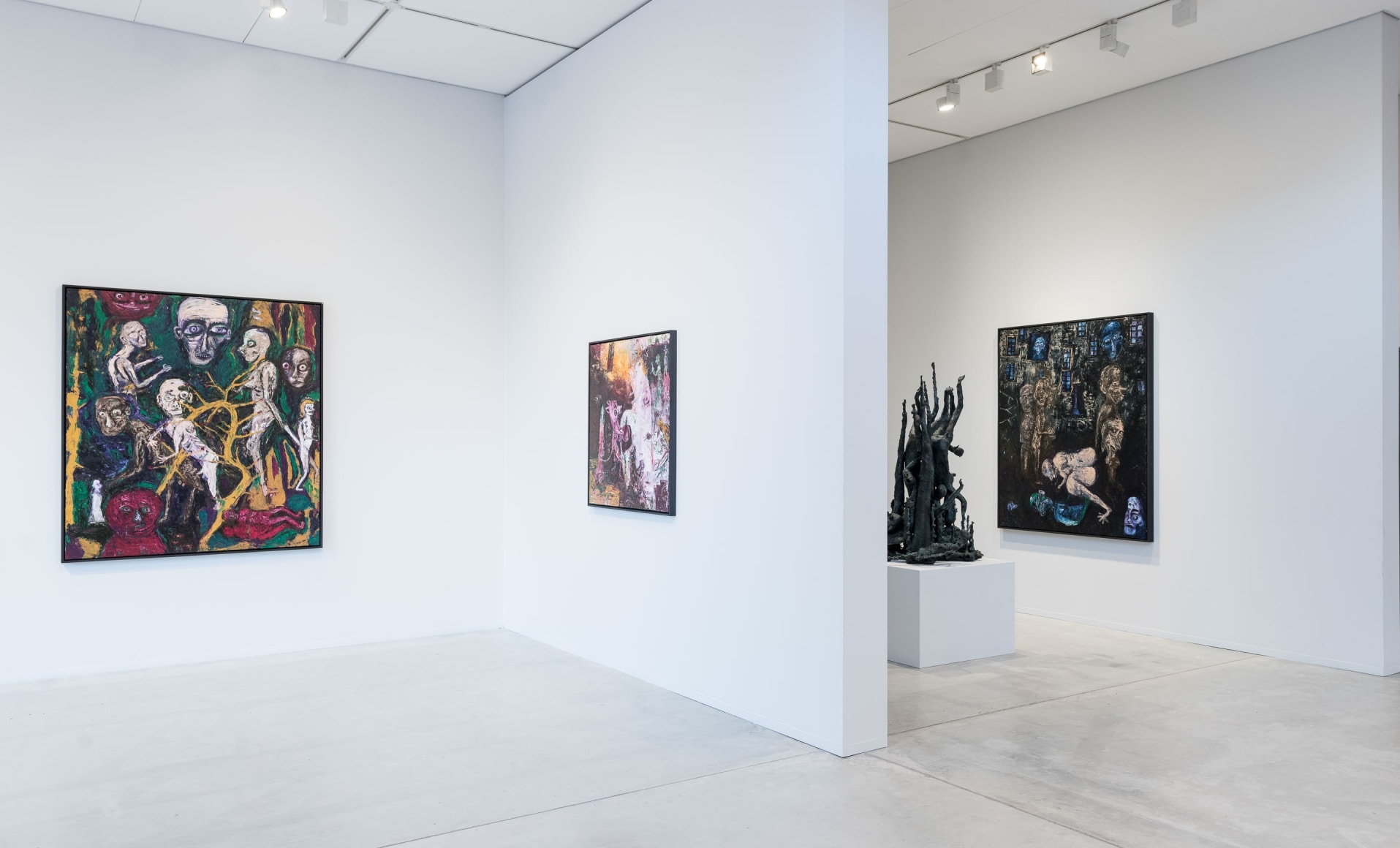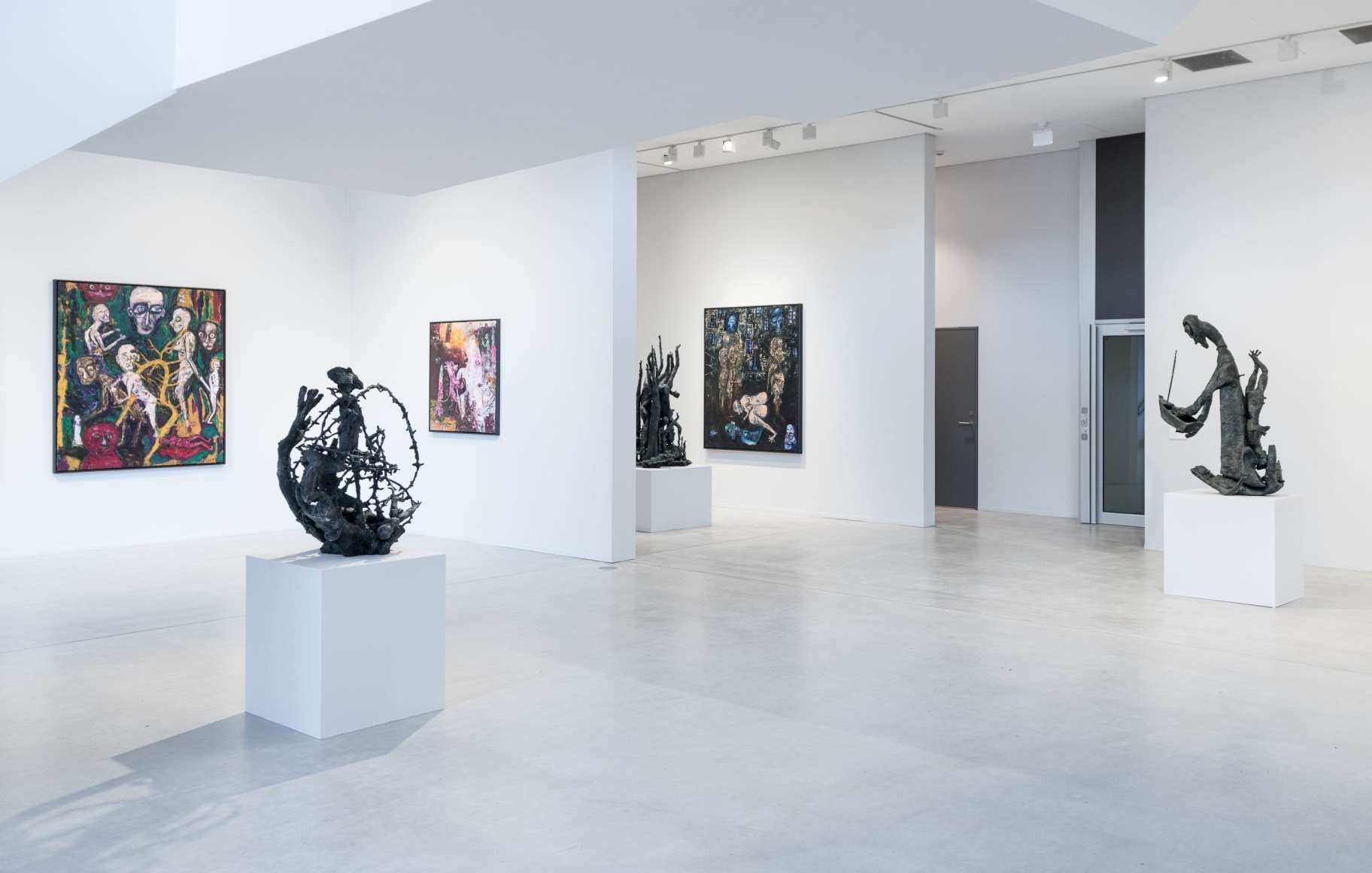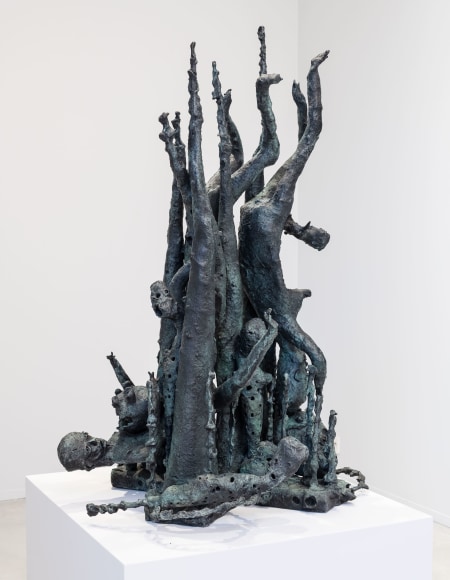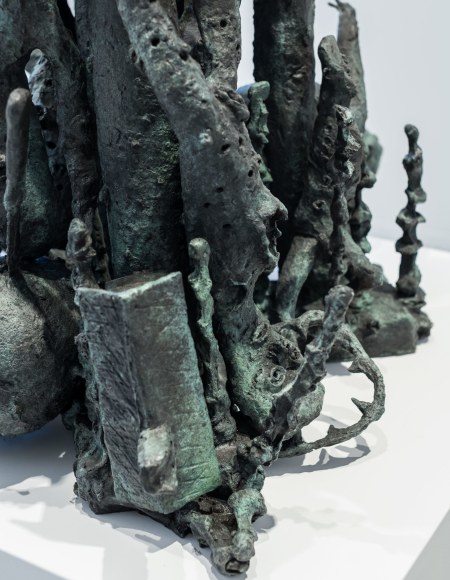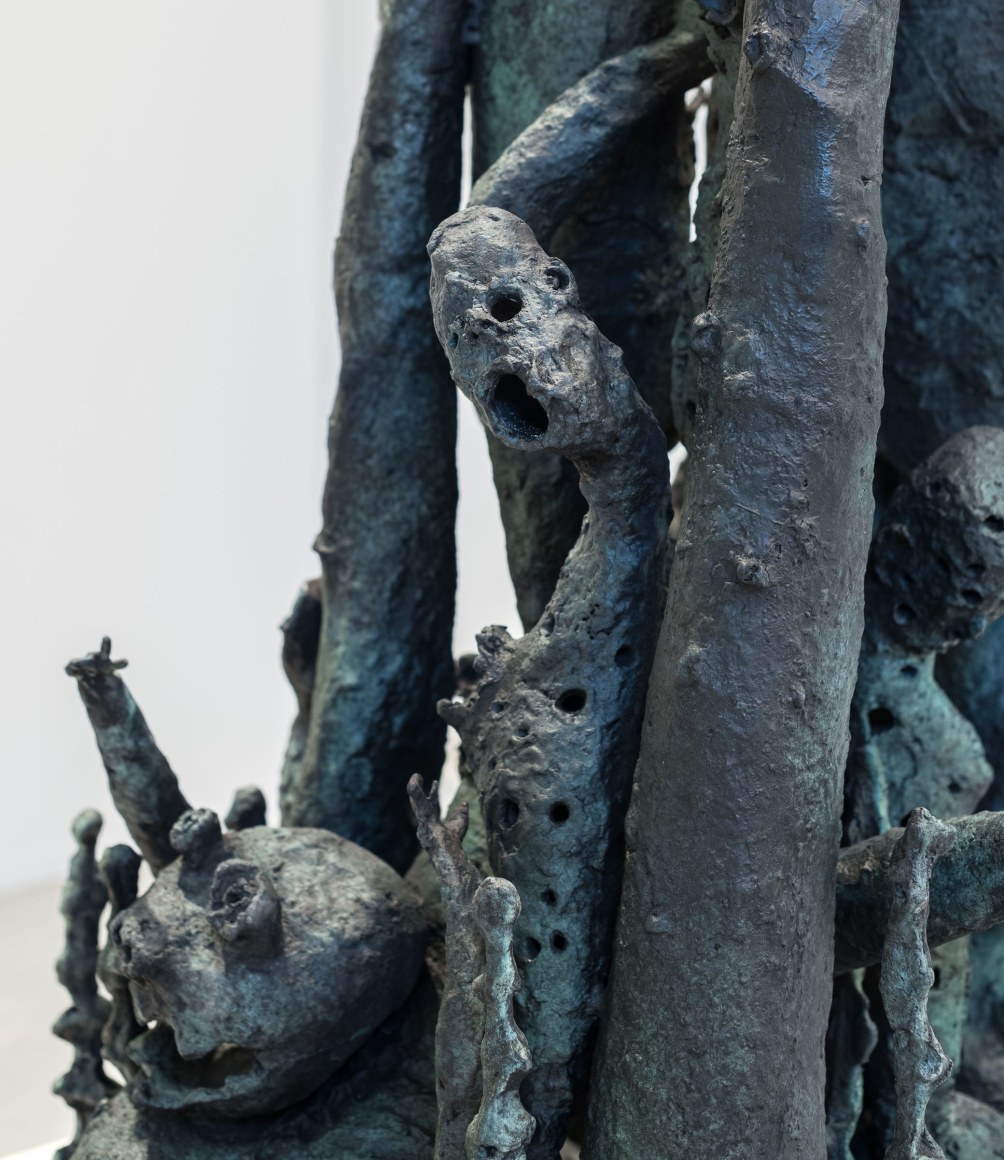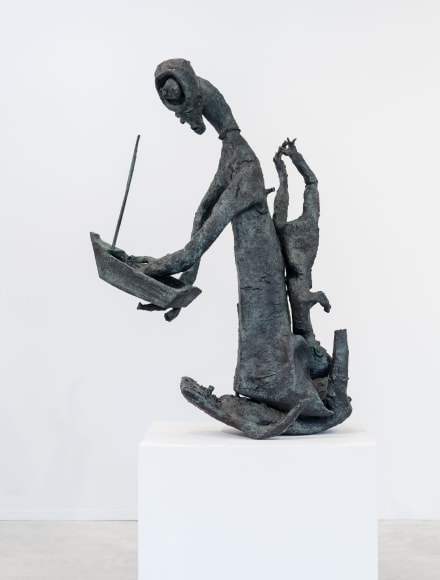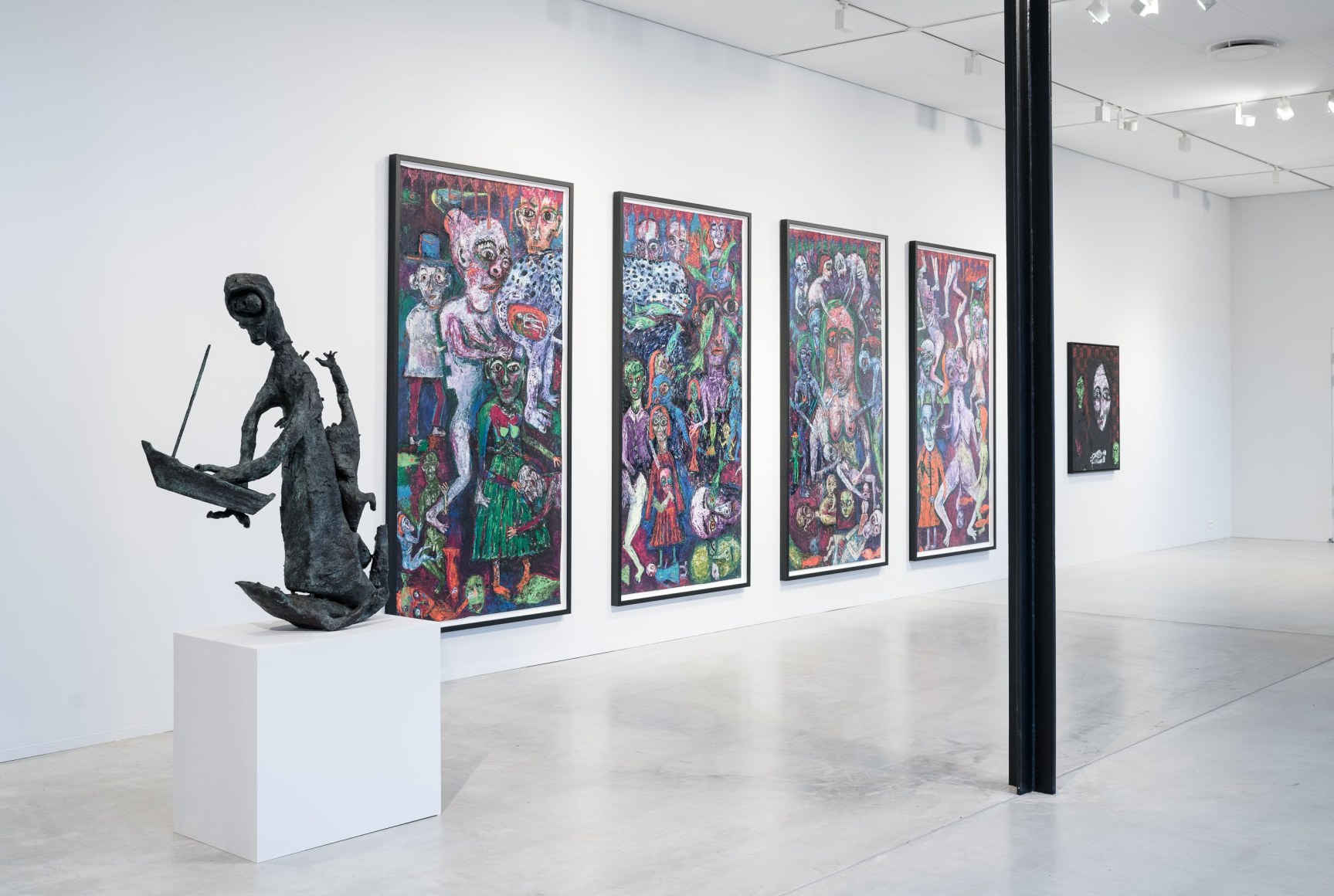BGE Contemporary Art Projects is proud to present Kjell Erik Killi-Olsen and the exhibition «Aftenlandet». Kjell Erik Killi-Olsen has distinguished himself time and time again as one of Norway's greatest contemporary artists. His breakthrough in the 1980s was sealed through the legendary installation «Salamandernatten», which was shown at the São Paulo Biennale in 1989.
In some ways this exhibition seems a natural development of Killi-Olsens oeuvre. Themes, like how we as a species are relating poorly to nature, or fairness and humanity, are continuations of earlier bodies of works. But the paintings here seem more urgent, more pressing. Killi-Olsens figurative paintings are powerful in color and articulation; every stroke of the brush has produced a thick layer of paint. The artworks have become more expressive, but are still alluding to the surrealist tradition of unveiling a collective unconscious and combining grotesque figures with elements of humor.
The title of the exhibition, «Aftenlandet», points at how Killi-Olsen relates to the world as it unfolds around us. It is another word for The West, now often referred to as The Global North. The term Aftenlandet is most famously associated with the German philosopher Oswald Spengler, and his work Der Untergang des Abendlandes (1918-1922). Der Untergang – the fall – of The West. The darkness that is displayed in the artworks is not conjured from thin air, but is a reflection of a darkness that many people have felt up close these past couple of years. Beside the fact that Killi-Olsen gives a sharp, poetic rendering of the state of affairs, this exhibition is a powerful display of the relevance of painting today.
There is a rich selection of sculptures that feeds nicely into the mood and the themes of «Aftenlandet». The composition of figures in the sculpture «Det vi ikke vet» (2021/22), for instance, creates a gruesome atmosphere by its dark expressionistic appearance. A silent scream seems to be let out from the main figure, and is reflected – not only in the viewer – but the exhibition at large.

